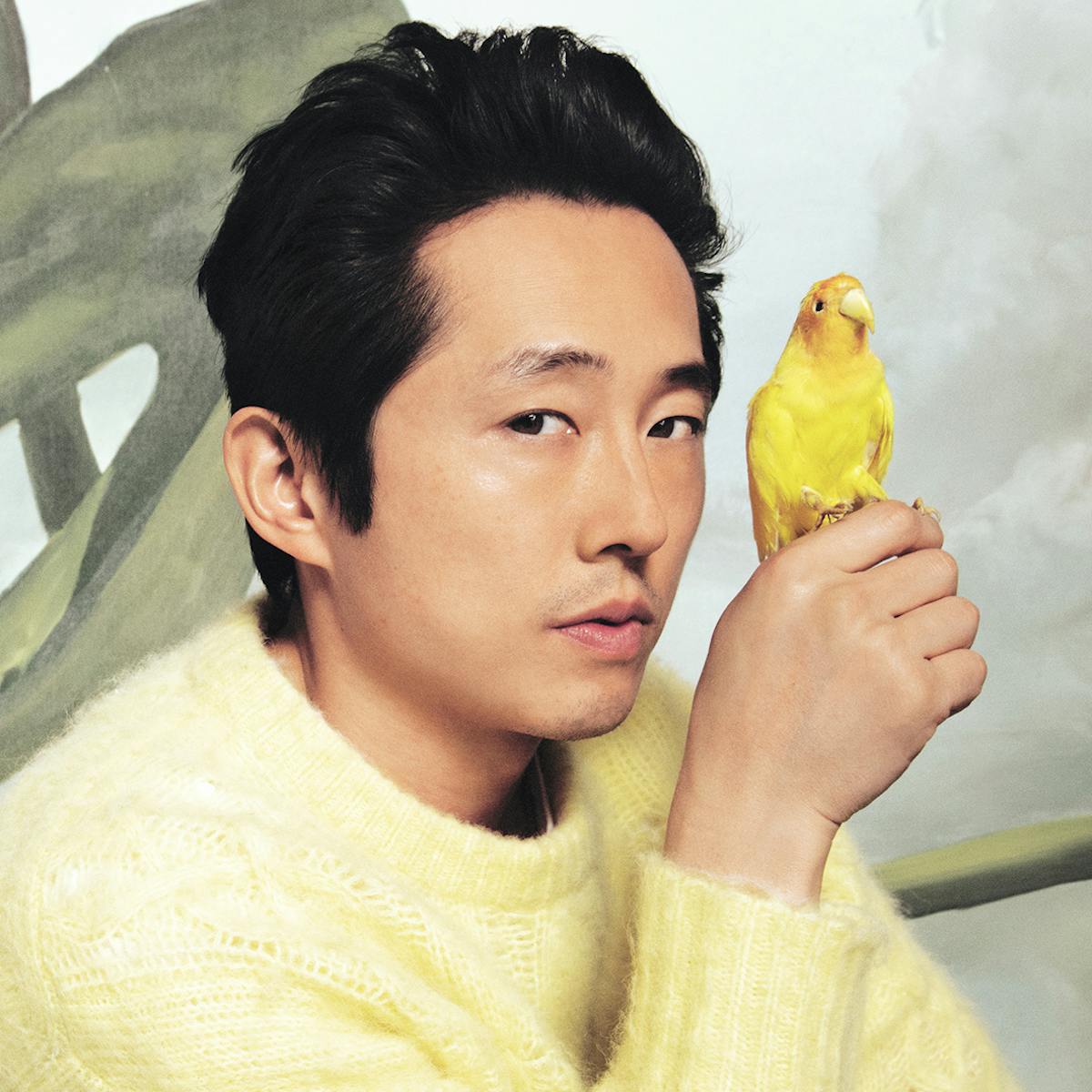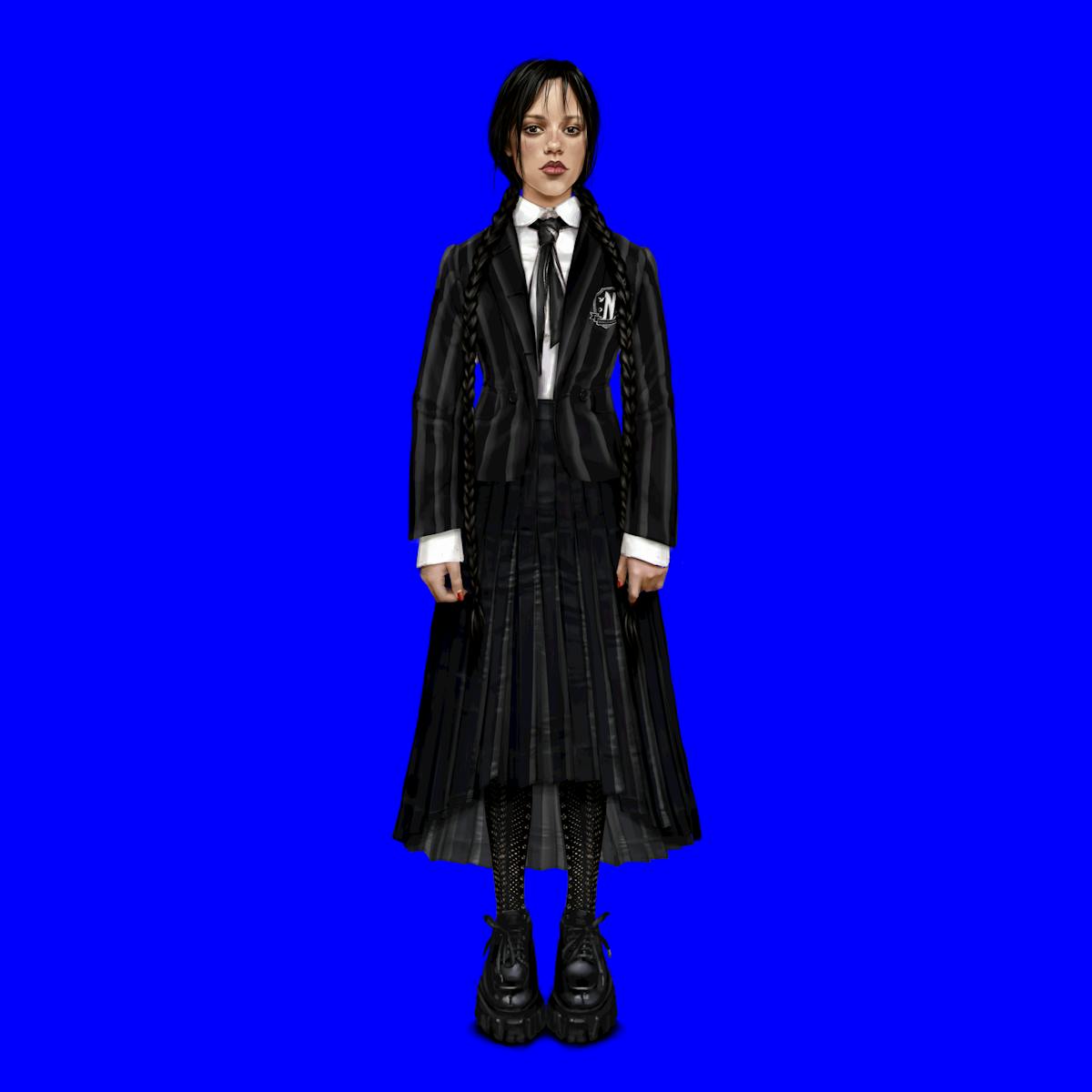The final episode of Black Mirror Season 6 rewrites the rules.
Four years after Season 5, more than a decade since it first premiered, and one long pandemic later, Charlie Brooker’s anthology series Black Mirror is back for its sixth season.
The show imagines the worst possible outcomes of media and technology culture with vigorous depravity and, lately, hope. From 2011’s pilot episode, “The National Anthem” — a gut-punch of dystopic fiction that ushered in a golden era for the genre on the small screen — to 2018’s groundbreaking interactive special Black Mirror: Bandersnatch, Black Mirror has never shied away from an experiment. “Ultimately, a Black Mirror episode can be whatever the hell we want it to be,” Brooker says. “There are no rules.”
Enter Season 6 — five cinematic, hour-long episodes that culminate in perhaps the least expected Black Mirror storyever: “Demon 79.” Written by Brooker and Bisha K. Ali (Ms. Marvel) and directed by Toby Haynes (Season 4’s “U.S.S. Callister”), “Demon 79” is inspired by touchstones like Hammer House of Horror and "master of horror" Dario Argento. With a supernatural premise, Brooker and Ali sever the episode exuberantly from the techno-dystopia that Black Mirror was founded on.
Set in the fictional English town of Tipley in 1979, the episode follows Nida (Anjana Vasan, We Are Lady Parts), a wallflowery shoe saleswoman at the drab department store Possetts. After she unwittingly unleashes a demon called Gaap (Paapa Essiedu, I May Destroy You), she stumbles into a grim ultimatum: Murder three people in three days or doom the world to Armageddon.
Photographer David Hurn, who documented 60s and 70s icons from Jane Fonda in Barbarella to the Beatles filming A Hard Day’s Night, went behind the scenes of “Demon 79” to capture the spirit of the set — and Essiedu’s gloriously campy costume. “When we first meet [Gaap], he comes in the form of a burnt-up goat head,” Essiedu laughs. Glittery, white, practically winged, and most importantly, funny, it nods to humanity and transcendence.
“There is a spark of optimism in ‘Demon 79’ — even though it is probably the weirdest, most twisted spark of optimism,” says Ali, “and I hope people can take that away from the episode.”
“Demon 79”’s picture of the past echoes our present challenges: in Tipley, Nida, an Indian British woman, faces daily aggressions; in England, the Fascist National Front movement backdrops the rise of an insidious Conservative politician (a slick performance from David Shields); and in the Cold War world, great powers battle for supremacy at great risk.
“It’s not nostalgia,” Brooker says. “It’s hopefully something jumpier, more anxious, more worried than that.”
Anjana Vasan’s performance gives us anxiety in spades, as Nida’s low-simmering rage boils over into something disturbingly like empowerment. “Anjana’s eyes could have their own series,” reflects executive producer Jessica Rhoades. “They are the most expressive, captivating eyes of any human I’ve ever met.”
“And Paapa did the impossible,” she adds. “Paapa came in, let us dress him in disco-wear and pulled it off, and had more swagger than I think anyone saw coming.”
Bold: It’s true Black Mirror style. “I expect it to be divisive — which is half the fun!” Brooker says of the episode. “And of course, ‘not being what audiences expect’ is very Black Mirror in itself.”
Or in Essiedu’s words, “Charlie, and the show, have always been ahead of the curve.”










